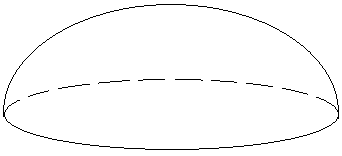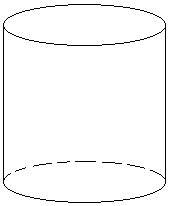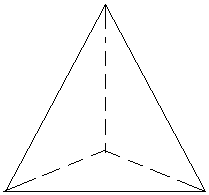Anti-counterfeit label based on trace amount two-dimensional random graphics
A technology of anti-counterfeiting labels and random graphics, applied in the field of anti-counterfeiting, can solve the problems of complicated counterfeiting verification technology, difficulty in forming credibility, easy to be copied, recycled or forged
- Summary
- Abstract
- Description
- Claims
- Application Information
AI Technical Summary
Problems solved by technology
Method used
Image
Examples
Embodiment 1
[0077] Such as figure 1 As shown, an anti-counterfeiting label based on trace two-dimensional random graphics includes two basic components: three two-dimensional random graphics 1 and a three-dimensional carrier 2 capable of accommodating all two-dimensional random graphics 1, two-dimensional random graphics 1 in pairs There are different surface patterns and colors between them, the positions are randomly distributed, and the thickness is 0.01mm. The three-dimensional carrier 2 is made of PC material, which can transmit visible light so that the two-dimensional random graphics 1 can be recognized by image recognition equipment; The image features of the combination of the two-dimensional random graphics 1 and the three-dimensional carrier 2 are recorded in the database for comparison and identification by the image recognition equipment; the anti-counterfeiting labels are divided into front and back, where the front is used for scanning and identification by the image recogni...
Embodiment 2
[0079] Such as figure 1 As shown, an anti-counterfeiting label based on trace two-dimensional random graphics includes two basic components: three two-dimensional random graphics 1; and a three-dimensional carrier 2 capable of accommodating all two-dimensional random graphics 1. The two-dimensional random graphics 1 have different surface patterns and colors between the two, and the positions are randomly distributed. The thickness of the two-dimensional random graphics 1 is 0.05mm. Each two-dimensional random figure 1 Including two parallel surfaces, the area of each surface is randomly 2-10 square millimeters; the three-dimensional carrier 2 is made of PMMA material, and the three-dimensional carrier 2 can transmit visible light so that the two-dimensional random figure 1 can be recognized by image recognition equipment Recognized; in the photos obtained by taking anti-counterfeiting labels from any angle, the area of two-dimensional random graphics 1 accounts for 50-60%...
Embodiment 3
[0081] Such as figure 1 As shown, an anti-counterfeiting label based on trace two-dimensional random graphics includes two basic components: three two-dimensional random graphics 1 and a three-dimensional carrier 2 capable of accommodating all two-dimensional random graphics 1, two-dimensional random graphics 1 in pairs There are different surface patterns and colors between them, and the thickness is 0.04mm. The three-dimensional carrier 2 is made of PS material, which can transmit visible light so that the two-dimensional random figure 1 can be recognized by image recognition equipment; the two-dimensional random figure 1 The positions in the three-dimensional carrier 2 are randomly distributed, and the three two-dimensional random figures 1 are in non-parallel planes; the image features of the combination of the two-dimensional random figures 1 and the three-dimensional carrier 2 are recorded in the database, It is used for comparative identification by image recognition eq...
PUM
 Login to View More
Login to View More Abstract
Description
Claims
Application Information
 Login to View More
Login to View More - R&D
- Intellectual Property
- Life Sciences
- Materials
- Tech Scout
- Unparalleled Data Quality
- Higher Quality Content
- 60% Fewer Hallucinations
Browse by: Latest US Patents, China's latest patents, Technical Efficacy Thesaurus, Application Domain, Technology Topic, Popular Technical Reports.
© 2025 PatSnap. All rights reserved.Legal|Privacy policy|Modern Slavery Act Transparency Statement|Sitemap|About US| Contact US: help@patsnap.com



